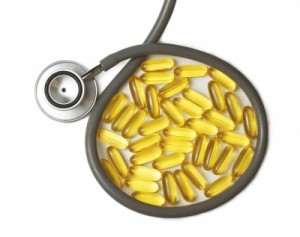 We have all seen or heard horror stories around today’s “factory farms.” It is sometimes to hear or see it and go on eating business as usual. We want changes to be made and at the same time, we know we need to get back to eating more vegetables and less processed foods. As a result, some of us choose to forego meat completely and opt for a totally plant-based diet (though the plant horror stories pour in daily as well! Even organic plants are increasing grown from GMO or compromised seeds or in soil that has contaminants so the need to be vigilant remains with all food purchases today.)
We have all seen or heard horror stories around today’s “factory farms.” It is sometimes to hear or see it and go on eating business as usual. We want changes to be made and at the same time, we know we need to get back to eating more vegetables and less processed foods. As a result, some of us choose to forego meat completely and opt for a totally plant-based diet (though the plant horror stories pour in daily as well! Even organic plants are increasing grown from GMO or compromised seeds or in soil that has contaminants so the need to be vigilant remains with all food purchases today.)
Going vegetarian has only become possible as a healthy lifestyle choice very recently. In fact, there has never been a successful vegetarian society on record: every culture, tribe, or race has eaten some form of animal protein, whether it is game, fish, or insects. That’s because there are certain nutritional components such as vitamin B12 and essential fatty acids that our bodies require in order to function and until recently, these could not be acquired in supplement form.
Now it is possible to access these nutrients through pills, though research suggests that they may not be absorbed or applied as effectively as if we took them in directly from nature. Some choose the vegetarian lifestyle because they believe it’s healthier: they say it makes them feel better or have more energy — and it is certainly preferable in that regard to consuming processed food and empty calories. (We’ll talk more about the health benefits and risks shortly.)
Others make the choice as a means of affecting change or voicing discontent with today’s food practices, though many food insiders suggest that trying to change the system by removing your money from it is not the most effective strategy. Instead, they argue that more powerful change can be made by supporting sustainable and humane food practices like raising grass-fed beef, producing raw milk and giving your money to local family farms.
Almost every health guru is telling us to eat mostly plants these days and eating 50% of our calories from vegetables or having 9-13 servings of vegetables a day is becoming increasingly common as an eating goal, whether you are vegetarian or not. But there are key health differences and implications between eating ‘mostly’ plants and eating ‘only’ plants. Regardless of the reason you or your loved one chooses a vegetarian diet, there are some important health factors you need to take into consideration to ensure you thrive — and survive — on your plant-based plan.
Vegetarians and Cholesterol
Many vegetarians I know are confounded by the fact that they have high cholesterol, convincing themselves that it must be genetic. While the first thing I would say is that many studies show that people with high cholesterol live longer than people with low cholesterol and 75% of those who suffer heart attacks have “normal” cholesterol so don’t stress yet, they can’t figure out why and they are afraid that they are at heart health risk.
(Cholesterol tests are not an accurate reflection of your heart health risk; if you want to know what actually does predict your heart health risk, you’ll want to read my article on the one test your doctor isn’t doing.)
What they don’t realize is that we need cholesterol; it plays several absolutely essential roles in a healthy functional body. While a popular advertisement suggests that we run on coffee drinks, in truth, our bodies run on cholesterol. Cholesterol keeps cell membranes from falling apart and plays an integral part in cellular repair. It builds brain and nerve tissue, supports the immune system, and maintains neurotransmitter and brain function.
Cholesterol is also a vital pre-cursor to many major hormones including testosterone, progesterone, estrogen, cortisol, and dehydroepiandrosterone (DHEA). Cholesterol helps regulate mood, is required for synthesis of vitamin D and helps us digest fat-soluble vitamins such as A,D,E and K. We could not live without cholesterol!
The body manufactures about 75% of the cholesterol it needs; the rest we must take in from foods. Without adequate dietary cholesterol, the body may divert cholesterol to where it is needed most: cellular repair and healthy function in key areas, especially the brain. When this happens, there may not be enough left for use in hormone synthesis, which can cause hormonal imbalance or other concerns.
This is why some people (especially but not limited to women going through perimenopause) who do not eat enough cholesterol may experience more severe hormonal reactions and symptoms.
In fact, the body has a built-in mechanism to increase its cholesterol production to override a severe shortage. When cholesterol is not being consumed in appropriate levels, the liver will step in and actually overproduce cholesterol. If you were to be tested at that time, your cholesterol levels could be considered high, even though you would actually be cholesterol deficient.
If you don’t eat much cholesterol, or you’re on a low-fat diet, that could be the case for you. (But hopefully you know by now that low fat is NOT the answer – not for health or for weight loss.)
We have to eat cholesterol or our bodies will produce it for us. Eating foods high in cholesterol won’t raise your cholesterol. That’s because if you eat cholesterol, your body will just produce less: it’s one of life’s perfect balancing mechanisms. While we can make up to 75% and we need to eat the rest to survive, if we eat more than 25%, the body just produces less and brings us back into alignment naturally.
We can get the cholesterol we need by eating a typical diet including meat and/or fish. If you are vegetarian you can get cholesterol from egg yolks (one of nature’s super foods), butter, cream or cheese. The problem arises for vegans as plants only contain trace amounts and not nearly the level needed to support healthy brain and cell function.
While plant products such as flax seeds and peanuts contain phytosterols, which are cholesterol-like compounds, research suggests that these compounds actually compete with cholesterol for absorption in the intestines. This poses a health challenge for vegans as there is no adequate non-animal source of cholesterol; flax is the next best alternative. Vegans will have to use all their available cholesterol for cell and brain function and there may not be enough left over for hormonal balance and other functions.
Before we leave cholesterol, there are three foods that actually WILL raise your cholesterol. If you think you eat healthy and yet your cholesterol levels are high, you likely have inflammation and sending in cholesterol is the body’s way of dealing with that. (If you want to learn more about the three foods that will raise your cholesterol and cause health problems, you can read my article on three foods that raise your cholesterol here.)
Vegetarians and Homocysteine
One marker that unlike cholesterol has been directly linked heart health is high homocysteine levels. High homocysteine is a reliable risk factor for heart attack, stroke, diabetes, cancer, neurological conditions such as Alzheimer and Parkinson’s, thyroid concerns, infertility, depression, digestive disorders and chronic pain.
High levels of homocysteine impact your body in a number of harmful ways including accelerating aging and depressing your immune system but it’s rarely tested for because it’s expensive and there isn’t a prescription available to treat it.
Studies have shown that many vegans and vegetarians have high homocysteine levels. One study showed vegans to have 50% higher homocysteine levels and vegetarians to have 30% higher homocysteine levels than their omnivore counterparts. This is because their bodies lack the B12 required for conversion processes that must occur since B12 is typically found in animal protein.
Vegetarians were found to have 37% less (and vegans 59% less) B12 than the omnivore group, enough to constitute clinical deficiency in 78% of the vegans and 26% of the vegetarians. The study also showed that people eating vegan and vegetarian diets lacked the essential amino acid methionine because the levels in plants are lower than those found in meat. Vegetarians and especially vegans need to look to add B12 to their diets through injections, sublingual (under tongue) or spray B12 supplements.
(To learn more about what homocysteine is, how it works, the conversion process mentioned briefly above and why homocysteine is so important, see my article on homocysteine.)
Vegetarians and Depression
A recent study showed that vegetarians were more likely to face anxiety, depression or mental disorders than the general population. When they adjusted for age, gender and education, within comparable groups they saw a 2 to 3 fold increase in incidence rates.
We already learned that cholesterol runs the brain and regulates your mood, so a shortage will have an impact on brain function. In addition we learned of the important of cholesterol in hormonal balance. If your hormones are out of whack, mood swings and depression can occur.
We also know that omega 3 essential fatty acids are critical to brain function and balance. Many studies have shown improvements in mood through omega 3 supplementation. Because these fatty acids are essential, our bodies cannot make them; we must eat them. Fish oil capsules are a great way to get the required dose, but for vegetarians and vegans, it is much harder.
There are 3 essential fatty acids: ALA, EPA, and DHA. The challenge to vegetarians is that you cannot get EPA or DHA from plants. (An algae-based DHA product is now available but there are questions as to whether or not it is absorbed or utilized fully effectively, though something is always better than nothing!) ALA can be ingested from plant sources such as flaxseed, chia and hemp. While these seeds offer the greatest concentrations, they each pose another challenge. Hemp is not always easy to acquire or work with.
Flaxseed competes with cholesterol receptor sites and needs to be ground in order to be digested. While best fresh, flax seeds can be ground in advance and stored in the freezer, but there is some evidence that after age 45, we don’t absorb the oil by-product as well. Purchasing flaxseed oil is an option but it cannot be heated or it will damage the ALA and drinking it straight can be a challenge.
Lastly chia seeds have an omega 6-3 ratio of 3-1. We need to be eating omega 3 and omega 6 oils in a ratio of 1:1. In todays world, that ratio can sometimes be off by 1-20 or even 1-50 with all the omega 6 oils and oil products we consume. So while chia can help, it also adds to the omega 6-3 imbalance burden (though again, for some vegetarians, this may well be necessary and worthwhile.)
You can also get ALA from walnuts and pumpkin seeds, though in much smaller doses. Soy and canola also contain small amounts of ALA, but given the negative health impacts, they are best avoided.
Even if you eat enough ALA, the then body has to convert it to EPA and DHA. If you eat enough and you are very healthy, that may work fine. But some people will struggle converting ALA efficiently and if you have other issues going on that impact your ability to convert effectively, your body — and your brain — will be affected because it will not be able to convert enough to keep you healthy and mentally strong.
To learn more, you can read about my article on omega 3s.
Vegetarians and Soy
I am working on a full article on soy, coming soon. But for now I just want to mention soy briefly here because many vegetarians use soy as a protein alternative. Fermented soy foods such as miso, tempeh, natto, and traditionally fermented soy sauce have long been a nutritional staple in many cultures and they offer tremendous health benefits.
However, unfermented soy is no longer grown or processed in a way that affords us health benefits. Soy is an endocrine disruptor, which we discussed in the prostate and breast health article. It takes up the estrogen receptor sites, blocking estrogen from getting into cells and leaving it circulating throughout the blood stream. This excess estrogen can lead to hormonal imbalance, development of breasts in boys and men, and prostate and breast cancer concerns as well as thyroid problems, to name but a few of its many health concerns.
Soy milk, soy cheese, tofu, soybean oil, and many commercial artificially created soy sauce varieties are not health foods but rather pose health risks; they should be minimized. If you’re looking to use soy, stick with fermented soy products.
Vegetarians and Diabetes
Contrary to what we might think of living a healthy plant lifestyle, vegetarians actually struggle with diabetes. The largely vegetarian country of India now faces the highest incidence level in the world and it is continually rising. That’s because in India, as the middle and upper classes have emerged, sedentary jobs are on the rise and Western food habits have invaded. Long known to be lovers of sweets, Indians love the sugar that is now plentiful, as well as the fried and processed foods we eat in the West, which may be vegetable-based but are no less healthy.
While some people lose weight on a vegetarian diet, others gain weight as they seek to satiate themselves with bread and pasta and empty carbohydrates that covert quickly into sugar. They also tend to gain weight in the more dangerous place, the abdomen. They may lack enough healthy fat in their diets and so their bodies seek to store more.
It’s important to combine healthy fat and protein with vegetables so vegetarians need to look for good fat sources such as olive and flaxseed oils, avocados, and coconut oil and be sure they are getting adequate protein from other sources such as quinoa. (For more information on diabetes and why food combining is so important, see my article on The Diabetes Myth.)
Some people thrive on a vegetarian diet: they look good and they feel good. Others grow very thin, frail and weak: when you see them they look pale and move slowly. I read a study awhile back that stated that only about one-third of the population could be successful on a vegetarian diet. That study assumed that you aggressively supplemented for missing nutrients and ate all the varied nuts, seeds, legumes and other foods needed to round out a balanced nutritional profile.
Taking all of that into account, they found that still only about a third of us could be healthy on a vegetarian diet. So if you have chosen a vegetarian lifestyle for any reason, you need to pay close attention to your body and listen to what those close to you see and share with you. I cannot tell you how many former vegetarians have told me their lives changed the day they went back to eating small amounts of animal protein. That may not be you but I have personally observed strong healthy adults turn into overweight or abnormally thin versions of their former selves on vegetarian diets.
I’ve tried to go vegetarian and for me, I did not thrive. But it works for many people I know. Just not all. If you look and feel great and you are able to procure all the micronutrients that you need, then you may be among the third of the population who will do fine on a vegetarian diet. But be wary of persuading your family, friends or co-workers to join you because what works for you may well not work for them (especially children).
If you begin to see your body shift over time that you don’t like, or if you’re not willing to devote the time and energy it takes to plan your diet thoroughly, then you may want to consider making some changes that will enable you to support your morality along with your health.
Whether you go vegetarian or not, we can all benefit from more a more plant-centric diet and from avoiding processed foods. That’s common ground we can all agree on!
To your wellness and health: your true wealth!

Inger
Author: Inger Pols is the Editor of the New England Health Advisory and Author/Creator, Finally Make It Happen, the proven process to get what you want. Get a free special report on The Truth About Sugar: It’s Not All Equal. Learn more about Inger and receive her free bestselling ebook What Your Doctor Isn’t Telling You.
Article Photo: courtesy of Apolonia | FreeDigitalPhotos.net
 As I watched people struggle to try to lose weight or change their diet in order to regain their health, I have observed the 98% rule over and over again: 98% of people who diet will gain back the weight and more. Usually in 6-12 months. I became curious about what it takes to be among the 2% who actually do succeed.
As I watched people struggle to try to lose weight or change their diet in order to regain their health, I have observed the 98% rule over and over again: 98% of people who diet will gain back the weight and more. Usually in 6-12 months. I became curious about what it takes to be among the 2% who actually do succeed.

 As we have read in
As we have read in  In the second of three articles about the real foods that raise your cholesterol (animal products are not among them!), we are going to look at sugar and review a form of sugar known as fructose. (If you missed the first article on trans fats, you can
In the second of three articles about the real foods that raise your cholesterol (animal products are not among them!), we are going to look at sugar and review a form of sugar known as fructose. (If you missed the first article on trans fats, you can  In this article, I’m going to cover a topic of concern for most men: prostate health. But this topic is important for female readers too. This information will likely be helpful to someone you love who does have a prostate AND you’ll also find much of this information applies to breast or uterine health as well. Many scientists consider prostate cancer in men to be the equivalent of breast cancer in women because it is brought about by the same conditions, factors and imbalances that simply manifest in different sexual organs because of gender. So ladies, there is something here for you, too.
In this article, I’m going to cover a topic of concern for most men: prostate health. But this topic is important for female readers too. This information will likely be helpful to someone you love who does have a prostate AND you’ll also find much of this information applies to breast or uterine health as well. Many scientists consider prostate cancer in men to be the equivalent of breast cancer in women because it is brought about by the same conditions, factors and imbalances that simply manifest in different sexual organs because of gender. So ladies, there is something here for you, too. We have all seen or heard horror stories around today’s “factory farms.” It is sometimes to hear or see it and go on eating business as usual. We want changes to be made and at the same time, we know we need to get back to eating more vegetables and less processed foods. As a result, some of us choose to forego meat completely and opt for a totally plant-based diet (though the plant horror stories pour in daily as well! Even organic plants are increasing grown from GMO or compromised seeds or in soil that has contaminants so the need to be vigilant remains with all food purchases today.)
We have all seen or heard horror stories around today’s “factory farms.” It is sometimes to hear or see it and go on eating business as usual. We want changes to be made and at the same time, we know we need to get back to eating more vegetables and less processed foods. As a result, some of us choose to forego meat completely and opt for a totally plant-based diet (though the plant horror stories pour in daily as well! Even organic plants are increasing grown from GMO or compromised seeds or in soil that has contaminants so the need to be vigilant remains with all food purchases today.)
 Follow me on Twitter
Follow me on Twitter 